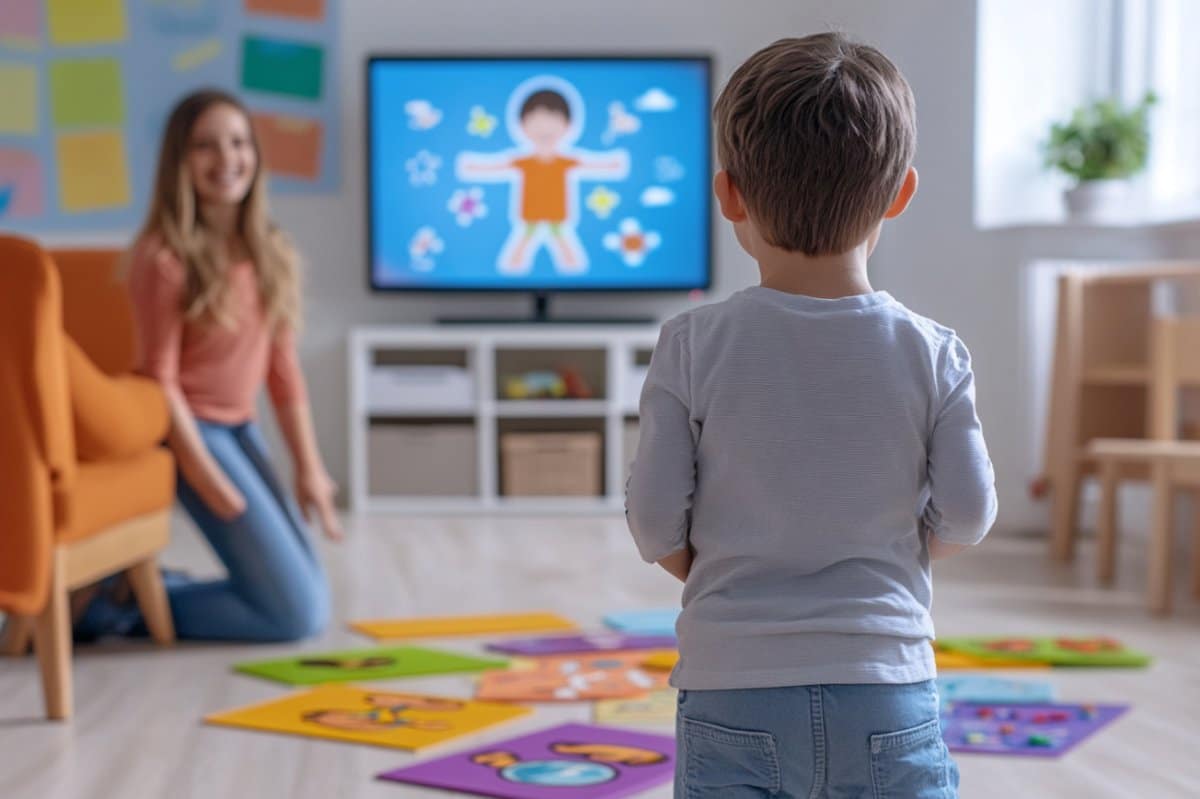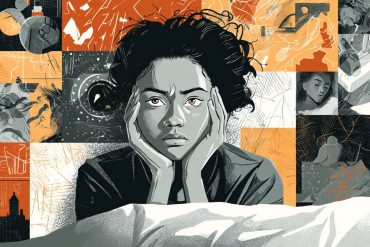Summary: Researchers have adapted a children’s exercise program to better serve neurodivergent learners using AI-generated instructions. By leveraging ChatGPT, the team simplified and clarified movement directions in over 500 activities from the InPACT video series.
This adaptation ensures more inclusive physical activity opportunities, particularly for children with autism and other neurodivergent conditions. The initiative highlights how technology can enhance accessibility and physical health in education, with ongoing efforts to expand resources and translations for broader reach.
Key Facts:
- AI Adaptation: ChatGPT helped rewrite 500+ exercise instructions to be clearer and more inclusive for neurodivergent children.
- InPACT at Home: Originally a response to COVID-19, the program now supports universal design with consistent, concise, and clear directions.
- Sensory Support: Instructions were adjusted for challenges like balance, motor coordination, and language processing.
Source: University of Michigan
A University of Michigan research team has used AI to help deliver exercise “snacks” to kids with autism.
The research team, led by U-M exercise physiologist Rebecca Hasson, overhauled a program that aimed to help children exercise when families had to pivot to online learning during the COVID-19 pandemic.

Now, a team of researchers from the School of Kinesiology used ChatGPT to overhaul the instructions for the program’s 132 exercise videos, adapting them to better meet the needs of neurodivergent children.
Their results are published in the journal Frontiers in Physiology.
Back in 2012, during Michelle Obama’s “Let’s Move!” campaign to combat childhood obesity, Hasson began working on ways to incorporate physical activity into children’s daily lives.
She and fellow researchers developed ways to integrate physical activity into children’s school days without major disruptions, and used the idea of “exercise snacks”—brief periods of exercise of about three to four minutes.
They called the program InPACT, or Interrupting Prolonged Sitting with Activity. The program has been implemented in 25 Michigan schools to date.
“We had these great training opportunities, teachers were feeling supported, kids were moving more—and then we had the pandemic,” Hasson said.
“The home became the classroom, and kids’ physical activity dropped significantly. So then we had to figure out how to adapt what we were doing in the classroom to the home environment.”
The researchers immediately set to work adapting InPACT for the home setting. To reach children who might not have internet access, the researchers worked with PBS’s Michigan Learning Channel and the Department of Education to broadcast the physical activity program on TV. Within six months, the television show had 15,000-20,000 viewers every day.
While the program was a success, researcher Haylie Miller, a developmental psychologist and assistant professor of movement science, noticed that neurodivergent children might have difficulty following instructions in the exercise videos, since they were designed for the way neurotypical children learned.
Miller studies how neurodivergent people use visual information to plan, execute and modify movement.
The team decided to collaboratively adapt the InPACT program to better meet the access needs of neurodivergent children.
“Neurodivergent people process sensory information differently than neurotypical people, which can make physical activity uncomfortable, difficult or intimidating,” Miller said.
“Neurodivergent people also have differences in body awareness and language processing, and may need more or different prompts to feel comfortable performing an activity.”
For example, she says, if a person has difficulty with balance, coordination of their limbs and performing a multistep task, they are likely going to need more physical or instructional support to be successful at a complex movement like a jumping jack.
The team began examining the 132 exercise videos developed for the InPACT program, each of which included multiple exercises. Undergraduate student Tania Sapre was tasked to begin adapting the videos’ exercise instructions to be more inclusive of neurodivergent people.
“I had started playing around with ChatGPT to get inspiration about how I should format my instructions when I suddenly realized that ChatGPT might be able to help fill the knowledge gap and data overload I was experiencing,” Sapre said.
“I thought that if I could perfect using ChatGPT for my instructions, I could create a simple process that could be replicated by other researchers, teachers and families at home to tackle novel exercises that our program did not cover, helping kids stay active everywhere.”
First, the team organized their video content so that they could form queries to submit to ChatGPT. From the 132 InPACT at Home videos, the researchers identified more than 500 activities. They then categorized these activities into main skill groups: jumping, core, lateral, sport, upper body, lower body and compound movements.
They then developed a prompt to elicit a set of instructions for a particular exercise from ChatGPT. For example, the researchers asked ChatGPT to “Provide simplified step-by-step instructions for a jumping jack, suitable for a neurodivergent child.”
Based on ChatGPT’s answer to that question, the researchers then asked the AI tool to “Condense the step-by-step instructions for a jumping jack, suitable for a neurodivergent child.”
The team reviewed each set of instructions to ensure that the AI-generated instructions were correctly crafted. The researchers also ensured that the instructions followed a core tenet of their exercise program, the “Three C’s”: consistency, conciseness and clarity.
“The InPACT team was already on the right track toward universal design by using video modeling and verbal prompts. Having multiple means of representation can really help a neurodivergent person understand the activity without having to guess,” Miller said.
“We’ve built on this strong foundation by simplifying the language used to describe each movement, breaking movements down into their components more explicitly, and using consistent wording across all activities to reduce ambiguity.”
Alanna Price is a regional health coordinator for her Michigan district. She oversees health education and driver’s education, and helped revise instructions for the neurodivergent learners.
“Adaptive Physical Education is necessary because it ensures that all children can participate in physical activities modified to their abilities. This promotes physical health, social skills and emotional well-being,” Price said.
“APE programs modify traditional physical education to meet the unique needs of all students, helping them develop motor skills, strength and coordination.
“Modified exercise directions for neurodivergent children, such as those with autism or ADHD, can enhance their physical and cognitive development. These modifications often include simplifying movements and cue words, using visual aids and incorporating sensory-friendly activities.”
The team has also started to develop a “starter pack” of activity play cards for people with higher support needs who may need to develop more foundational skills before diving into the full InPACT experience, Miller said.
“During the pandemic, there were fewer resources for parents who had children that learn differently. In the future, we hope to be more proactive rather than reactive, but this has been a great learning experience for us all, and I think it speaks to the value of being open to criticism,” Hasson said.
“If your mission really is to advance opportunities for all kids to be active, then being willing to partner with others to make that happen is really important.”
In addition to the starter pack, the researchers hope to have their videos translated into Spanish and Arabic, the two most frequently spoken languages in Michigan after English.
Study co-authors include Alanna Price of the Detroit Public School Community District; Anna Schwartz and Kerry Winkelseth of the U-M School of Kinesiology; Ron Zernicke of the U-M School of Kinesiology and U-M Medical School; and Leah Ketcheson and Jeanne Barcelona of Wayne State University.
About this AI, ASD, and exercise research news
Author: Morgan Sherburne
Source: University of Michigan
Contact: Morgan Sherburne – University of Michigan
Image: The image is credited to Neuroscience News
Original Research: Open access.
“Enhancing home-based physical activity for neurodivergent children: adapting the InPACT at Home program with AI and universal design” by Rebecca E. Hasson et al. Frontiers in Physiology
Abstract
Enhancing home-based physical activity for neurodivergent children: adapting the InPACT at Home program with AI and universal design
Purpose: While it is common practice for schools across the United States to include neurodivergent children in physical education classes, many programs outside of school—such as those at home or in the community—are not effectively tailored to meet their support needs.
This gap contributes to lower levels of physical activity among neurodivergent children. Our objective was to address this issue by systematically adapting the InPACT (Interrupting Prolonged sitting with ACTivity) at Home program to enable neurodivergent children to safely engage in physical activity at home.
Methods: The rapid-cycle research adaptation process involved several key steps: (1) sorting and grouping video content based on different types of skills and exercises (problem exploration); (2) assembling an expert team to guide the development of the instructions (knowledge exploration); and (3) using generative artificial intelligence (AI) to create concise instructions and cue words for each skill/exercise (solution development).
These outputs were then fine-tuned by the expert team. The refinements were guided by the Universal Design for Learning (UDL) principle of “Representation,” which acknowledges that learners perceive and understand information in diverse ways.
Results: From the 132 InPACT at Home videos, over 500 activities were identified and categorized into main skill groups: jumping, core, lateral, sport, upper body, lower body, and compound movements. Expert meetings emphasized the importance of the “Three C’s”—consistency, conciseness, and clarity—in crafting instructions, along with the use of simple, elementary sight words.
AI was employed to generate and refine prompts like “Provide simplified step-by-step instructions for a jumping jack, suitable for a neurodivergent child” and “Condense the step-by-step instructions for a jumping jack, suitable for a neurodivergent child”.
Discussion: The adaptation of the existing InPACT at Home program was guided by dissemination and implementation science frameworks, aiming to increase equitable access to structured youth physical activity opportunities for neurodivergent children. By incorporating AI and UDL principles, we aim to further enhance the program’s accessibility.
Our next steps include evaluating the effectiveness of our program adaptations in encouraging participation in the InPACT at Home program and subsequently increasing physical activity levels among neurodivergent children.







